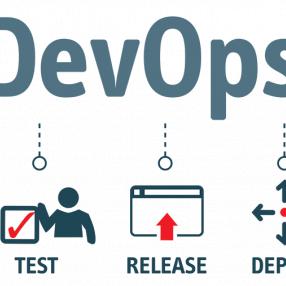4 Tips for Preserving Data Integrity During Integration
Integrated systems use shared data to fuel analytics, improve big data and AI initiatives, and inform machine learning algorithms. But imagine making major decisions on marketing budgets, sales processes, and customer service programs using completely inaccurate data.
IT Security: 3 Lessons From The Kaseya Ransomware Attack
Well, here we go again, another massive cybersecurity breach. Even bigger than the Colonial Pipeline incident, the recent Kaseya ransomware attack affected up to 1,500 businesses whose partners use Kaseya’s tools to manage IT infrastructures. The hackers found a flaw, exploited it, and then pushed…
Continue reading
5 Early Warning Signs of Data Migration Disaster
The best way to solve any problem is to catch it early, and when you’re planning a data migration, the ideal is to avoid the problem altogether. As migrators/integrators, we see a lot of unique projects, but they all share a common theme: their success is dependent on the team’s understanding of…
Continue reading
What Types Of Software Are Helpful For Growing Small Businesses?
Regardless of whether you are an entrepreneur or head various organizations, there are many different operations happening all the time. These operations need time and attention. According to analysts, many small business owners invest most of their energy and time on everyday jobs that divert their attention from their long-term objectives, affecting the growth of their companies. As small business owners usually have a limited budget and a small number of workers, it can become challenging for them to streamline all of their supply chain operations.
Managing Digital Disruption: 4 Core Strategies
Disruption is inevitable, whether we like it or not. Digital influence affects every facet of a business – customer experiences and perceptions, employee productivity and invention, and the ability to do business at scale and outpace competitors.
Continue reading
4 Must-Have Creatio Integrations
One of the undisputed leaders in the field of low-code development is Creatio, whose flexible platform for development accompanied with their CRM has enabled all types and sizes of businesses to turn their employees into “citizen developers”. And appropriately, such a flexible platform offers up a…
Continue reading
4 Key Components of Data Lake Architecture
Data lakes provide a centralized location for massive volumes of different kinds of data. They act as a scalable infrastructure to store, process, and analyze these large swaths of information. Unlike a data warehouse, which organizes data into files and folders, data lakes are unstructured, storing data in its raw format from sources like analytics systems, dashboards, social media, mobile apps, and more.
5 Tips to Use AI and Automation to Simplify Workflow
Nowadays, more business processes involve AI than you could probably guess. Some are in the background, others are customer-facing, while some are designed to make employees’ jobs easier for the long haul by eliminating or reducing human error. Either way, artificial intelligence and automation go…
Continue reading
Powerful iPaaS Use Cases for Modern Business
Drawing on data from a variety of sources creates huge advantages for businesses – but it can also create huge complications. With so much information to manage, organize, and learn from, things can get messy fast. Integration Platform as a Service (iPaaS) solutions are Cloud-based tools that…
Continue reading
How to Create a Connection in StarfishETL
The connection is what allows you to have read/write access to the modules you need. It tells your connecting solutions, “Hey! I want StarfishETL to be able to access your data. Grant it the permissions it needs to do this migration or integration correctly.” Once the connection is in place, you…
Continue reading
CRM and ERP: The 7 Most Common Integration Use Cases
Talk to any integration expert and they’ll tell you: integration boosts productivity, collaboration, and analytical insights. However, integrating every field of data between a CRM and ERP is not a recommended best practice. Instead of creating more data transparency and simplifying data access,…
Continue reading
Dumping Data Silos for Better Business: An Overview
Whether or not you’re aware of it, at some point in your life you have probably felt extremely frustrated with a data silo. It is a nearly universal experience for a disappointed customer: you work your way through call routing and being put on hold, you finally get to talk to someone, it turns out…
Continue reading
The Ultimate Guide to E-commerce Replatforming and Data Migration
Today’s technological innovations surpass anything we’ve dreamed of a few decades ago, but there are companies still stuck with their older, less agile infrastructures. For an e-commerce business, this poses a huge problem and a major source of risk for the entire organization.
Continue reading
5 Use Cases for Infor Syteline Integration
In the past year, we’ve seen an explosion of Syteline integration requests. These projects range from more traditional connections like Syteline and CRM, to more unique ones, like connecting Syteline to the marketing automation solution. In this post, we’ll discuss the use cases for integrating…
Continue reading
13 Basic Integration Terms for Beginners
If you’re a CTO or you work in an IT department, you probably have a firm grasp on many of the terms associated with integration. However, sometimes department managers in marketing and sales roles are asked to spearhead integration projects. When the integration provider asks questions or explains…
Continue reading
2 Quick Tips to Prepare for HubSpot CRM Integration
Integrating HubSpot CRM is a smart business move. One of HubSpot’s greatest strengths is the diverse swaths of data it makes reportable for smart sales decisions. All of this data is accessed on a user-friendly platform that is easy to learn and capitalize on. When we connect that power to other business systems, we’re furthering the extent of our analytical capabilities and our understanding of our business processes.
ETL Data Integration: What to Look for
Extract, Transform, Load (ETL) has many practical uses, chief among them are its capabilities for data integration. Although data integration is one of the most common ways businesses choose to use ETL, ETL also has uses in loading data warehouses, augmenting data for profiling, and data migration…
Continue reading
What is iPaaS?
Originally coined by Gartner, the term iPaaS refers to cloud-based integration platforms that are able to connect various applications, systems, and technologies. The versatility and power of iPaaS solutions serves the digital well-being of businesses by allowing them to not only connect…
Continue reading
5 Advanced Solutions to Transform Your IT Infrastructure
For companies focused on software development, code development, and a wide array of IT solutions, the ability to grow in a scalable, controlled manner is a defining factor of success and future viability. Old-school data management processes paired with limited hardware technology can only stifle…
Continue reading
Explaining B2B CRM and How it Boosts Corporate Processes
Today, a lot of factors influence the formation of healthy B2B relations. Personalization, attention to detail, and solid customer service are just a few. The B2B buying process is often longer and more complex than in B2C, which is all the more reason to adopt supporting solutions like CRM. Those…
Continue reading
5 Ways DevOps can Push Your Company Forward
Envisioned as a comprehensive solution to the persisting problems that software developers and operations managers face, DevOps quickly became one of the pillars of application development in the modern IT world. In essence, DevOps aims to bridge the gap between development and operations by…
Continue reading
You Should Be Integrating QuickBooks with Your CRM. Here’s Why.
Your business, like any other, requires some sort of financial software to keep track of customer purchases, billing data, payroll data, etc. QuickBooks is a market leader in accounting software, so it makes sense that it’s a top choice for small and medium sized businesses that want to keep…
Continue reading
Data Quality Management: What it is and How to Do it
Data is at the core of every business decision. Whether you’re predicting customer expectations, planning marketing campaigns, or strategizing sales, data informs the competitive and historical insights for effective business strategies. The success of data-led initiatives ties in directly with the…
Continue reading
Top 10 Data Migration Best Practices
Ever-changing technology makes data migrations inevitable. Legacy systems become obsolete, leaving you with data that no one can find, extract insights from, or even access. Large or small, migration projects move relevant data from legacy systems to updated solutions to help your business stay…
Continue reading
4 Considerations to Prepare for ERP Integration
The benefits of ERP integration are numerous. It improves order and inventory management, reduces errors and duplicate data entries, increases productivity, and much more. ERP integration adds value to company data, but the process can become overly complex without thoughtful planning. In this post…
Continue reading